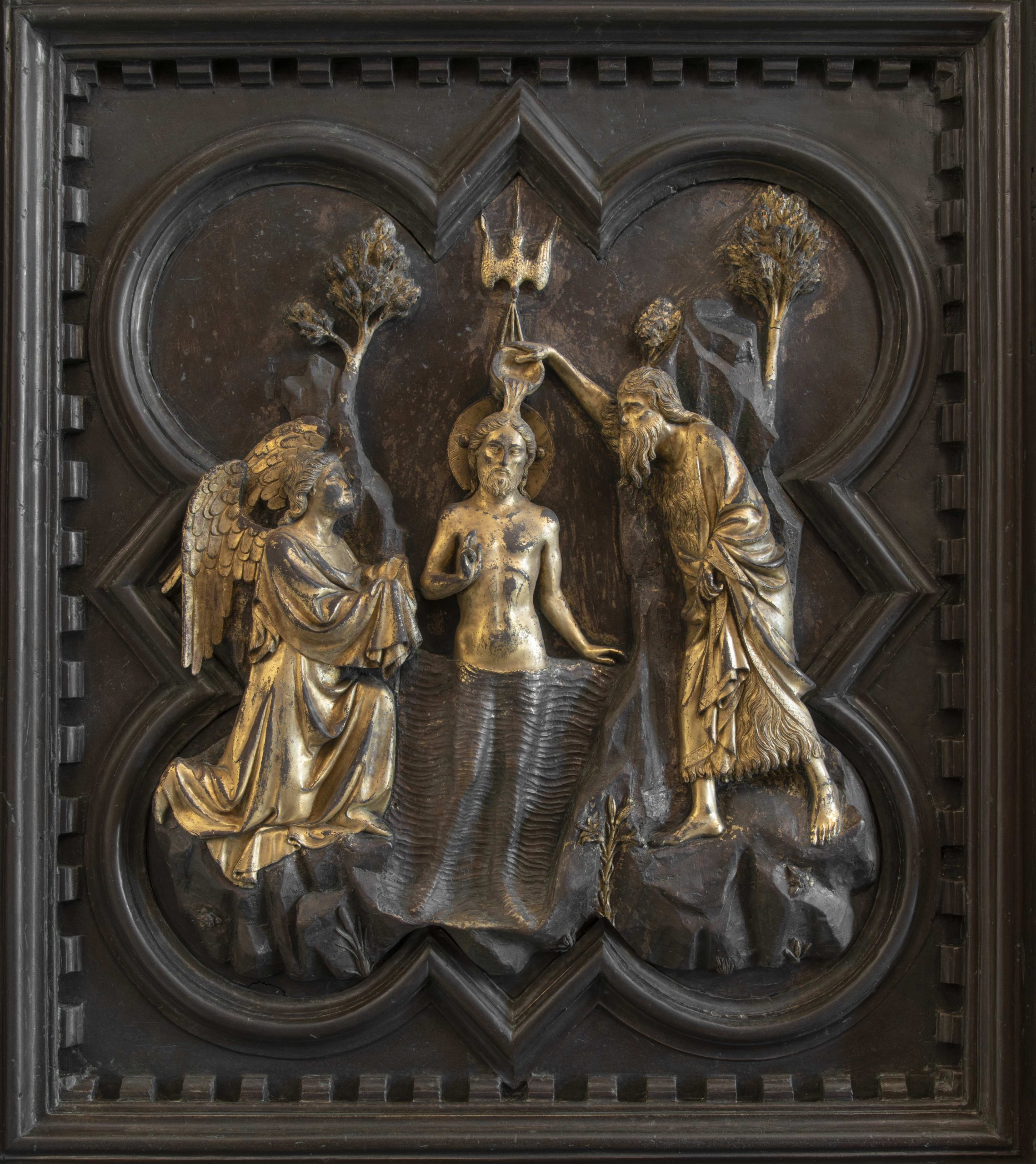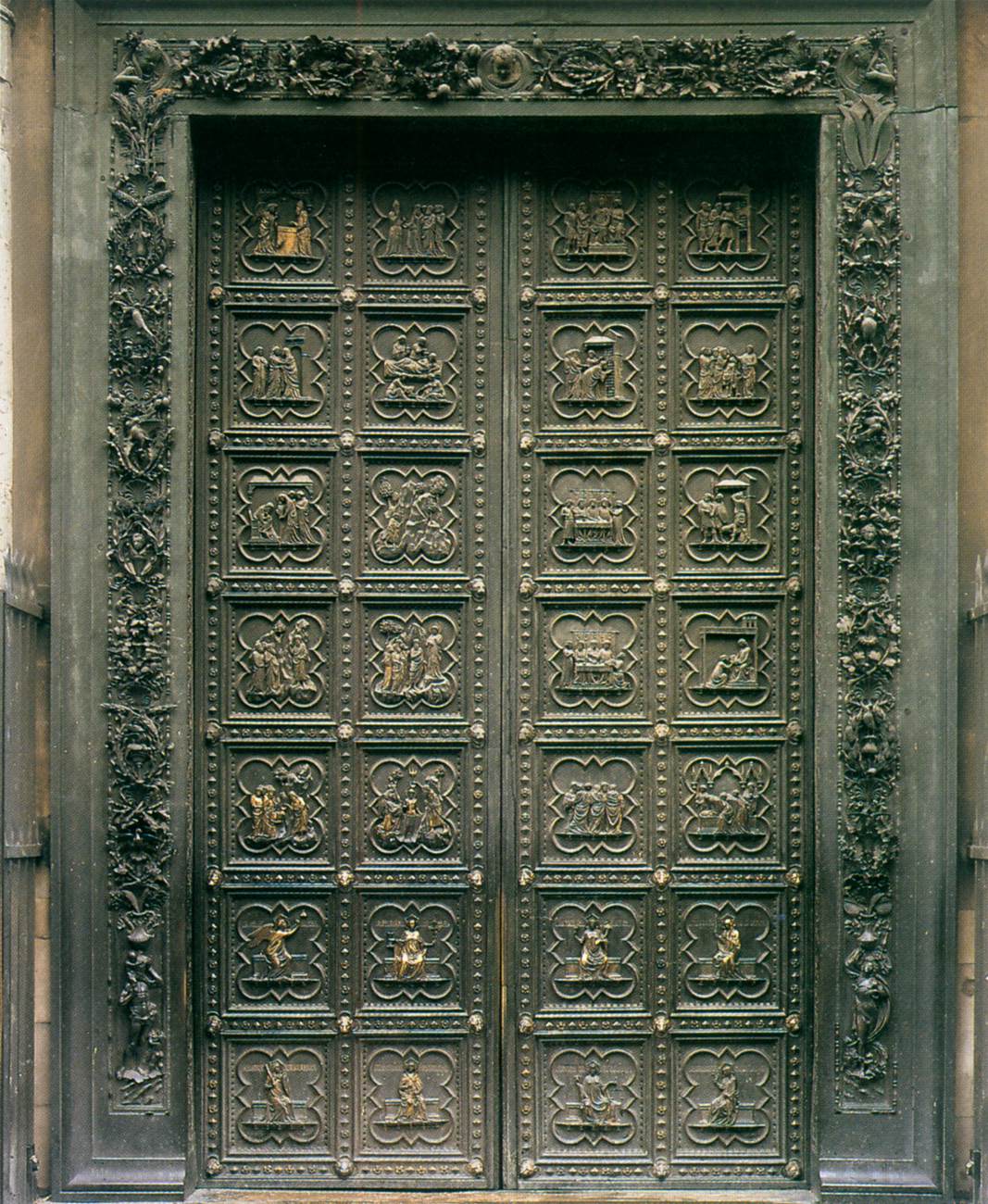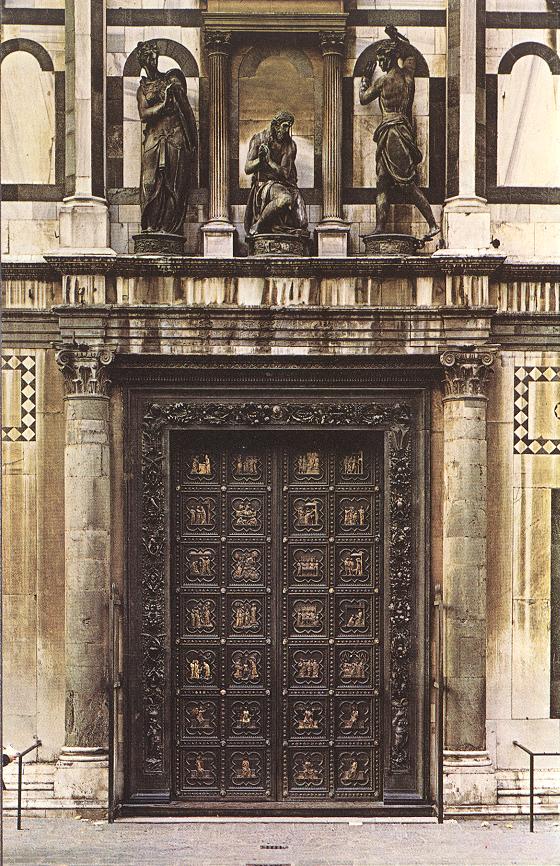Andrea Pisano (1290–1348), one of the foremost sculptors of 14th-century Tuscany, left an indelible mark on the world of Gothic art. His South Door of the Baptistery of Florence stands as a testament to his skill in both bronze casting and his deep understanding of narrative and emotion. Created between 1330 and 1336, this work was commissioned to replace a previous wooden door, and it remains one of the most iconic examples of Gothic sculpture in Italy.
The Design and Symbolism of the South Door
Pisano’s South Door features 28 bronze panels arranged in seven rows, each telling a distinct story from the life of John the Baptist, the patron saint of Florence. The intricate scenes capture the pivotal moments of John’s ministry, including the Baptism of Christ, his preaching, and his martyrdom. These figures, while religious, are infused with human emotion, reflecting Pisano’s collaboration with Giotto, who revolutionized art by adding realism and depth to figures. The quadrilobe frames that encase each scene add a sense of elegance and unity to the overall composition, symbolizing the harmony between the earthly and divine.

The door also includes allegorical figures of virtues, such as faith, hope, and charity, which emphasize the moral teachings integral to the religious narratives. The juxtaposition of these virtues alongside the biblical scenes encourages the viewer to reflect on both the spiritual and ethical dimensions of the Christian faith.
Technical Mastery and Influence
Pisano’s technical expertise in bronze casting set the South Door apart. His deep knowledge of material allowed him to create highly detailed figures with realistic proportions and lifelike gestures. Each panel reveals Pisano’s understanding of light, shadow, and human anatomy, all while maintaining the stylized, yet expressive, nature typical of Gothic art. His use of bronze enabled a greater level of detail than would have been possible with wood or marble, marking a significant achievement in the use of this material for large-scale religious sculpture.

Influenced by Nicola Pisano and Giotto, Andrea Pisano successfully integrated the classical form and humanistic depth introduced by Giotto into the Gothic style. The reliefs on the South Door are not just static representations; they are dynamic narratives, breathing life into sacred stories.
A Legacy That Shaped Renaissance Art
Pisano’s work on the South Door set the stage for the Renaissance. His innovative approach to bronze casting and his emotionally engaging compositions paved the way for later artists, including Lorenzo Ghiberti, whose famous Gates of Paradise were inspired by Pisano’s work. The South Door remains an integral part of Florence’s artistic legacy, continuing to influence artists and sculptors across generations.

Conclusion
Andrea Pisano’s South Door of the Baptistery is not only a monumental achievement in Gothic sculpture but also a key turning point in the development of Western art. Its emotional resonance, technical innovation, and blend of sacred and moral symbolism showcase Pisano’s mastery and foresight, making it an enduring symbol of the transition from Gothic to Renaissance art in Florence.

